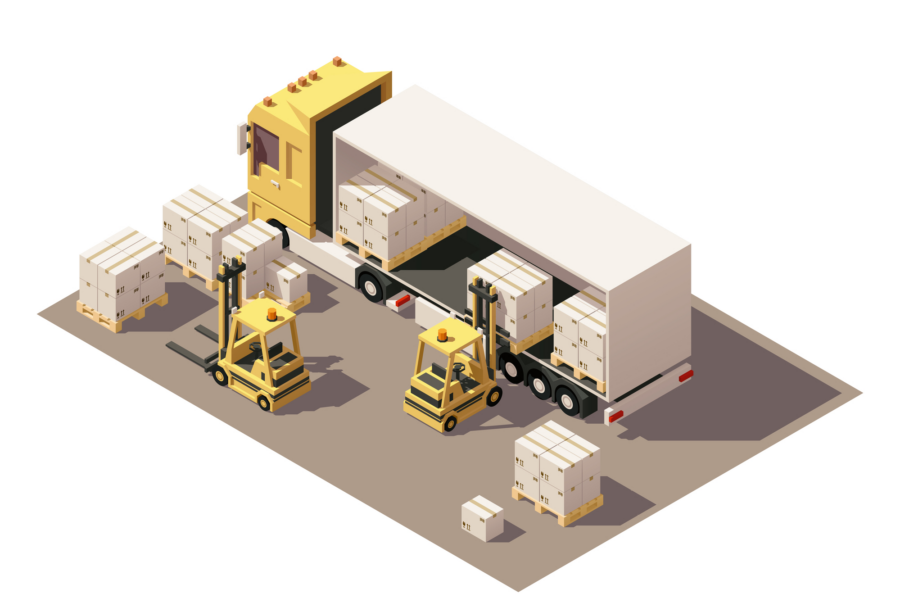Introduction
The trucking industry is huge and it keeps the world moving – goods from A to B, quickly and safely. Knowing the lingo is important for newbies and old hands alike. These are the words of the road and they help with communication and safety on the highways. From freight rates to dispatchers, from bill of lading to detention time, knowing these terms will make you more efficient and help you find your way around the industry.
Truck Driving Terms
Truck driving is an industry in itself and is important to many other industries. Knowing the terms will give you an idea of all the different jobs and departments within.
Truck Driving
At its simplest, truck driving is driving big trucks to move goods short or long distances. That can be local routes within a city or interstate highways, depending on the driver and the cargo.
Truck Drivers
Truck drivers are logistics. Each type of truck driver is a different part of the industry.
OTR Drivers
Over-the-road (OTR) drivers do long hauls – across state lines or cross-country. They need endurance, flexibility and to be on time. OTR drivers are away from home for extended periods, on different roads and in different weather, and moving goods on time.
Local Drivers
Local drivers are within a certain area or city, moving goods short distances. They return home nightly, have more regular hours, and are closer to family. But they have urban traffic and tight delivery times, so need to be sharp and know the local roads.
Knowing the difference between OTR and local drivers shows all the different careers in trucking. Whether crossing the country or city streets, truck drivers keep supply chains moving and economic activity local and global.
Lumper Fees and Services
In trucking logistics, lumper fees and services are part of the puzzle that affects both drivers and businesses. Knowing these will help with freight handling and road operations. OTR and local drivers are what show all the different careers in trucking. Whether it’s crossing the country or city streets, truck drivers keep supply chains moving and economic activity local and global.
Lumper Fee
A lumper fee is a charge to unload freight at a shipping or receiving dock. That’s for third-party laborers, called lumpers, to manually move the cargo. Lumper fees are when the consignee or consignor needs extra help beyond standard loading and unloading.
Lumper Services
Lumpers do all the services to move freight faster. Unload pallets, sort merchandise, organize inventory, and prepare goods for delivery. Outsourcing those tasks to laborers and businesses will be more efficient in the supply chain.
Pay Lumper Fees
Truck drivers often pay lumper fees during delivery. Payment methods and timing will vary depending on the carrier, shipper, and lumper service provider. Drivers need to know how and when to pay to avoid delays at the delivery site.
Lumper Fees Paid
Tracking and paying lumper fees is important for financial records and operational costs. Carriers will integrate lumper fees into freight rates or have drivers pay out of pocket. Digital tools and accounting systems will help with recording and reconciling lumper fees paid.
Average Lumper Fee
Lumper fees will vary depending on cargo, unloading requirements, and regional labor rates. There is no standard, but truck drivers can expect to pay $20 to $300 per load. Knowing the average industry rate will help drivers budget and negotiate with shippers and receivers.
Lumper Receipts
Keep records, including lumper receipts. Lumper receipts are proof of payment and carriers or tax authorities may require them for reimbursement. Organize receipts and keep them for the right amount of time and drivers will be financially protected and professional in trucking.
Loading and Unloading
Loading and unloading are part of the logistics process – on time and customer satisfaction. Knowing how that works shows who does what for drivers and service providers.
Unload Freight
Unloading freight is all the tasks – safely remove cargo from trailers, organize and move to storage areas. Drivers oversee that and coordinate with warehouse staff or lumper services to get the goods moved. Timely, accuracy, and detail are key to efficiency and delay.
Lumper Companies
Lumper companies are labor services for loading and unloading freight at distribution centers, warehouses, and shipping terminals. They have trained people, called lumpers, to help truck drivers move and process cargo. Outsourcing those tasks to lumper companies and businesses will be more efficient and resourceful.
Trucking Industry Overview
Trucking is the lifeblood of commerce – moving goods across the country and around the world. Knowing the industry is current trends, market, and trucking company operations.
Trucking Industry
The trucking industry has trends and stats that affect it and everyone in it. Fuel prices, regulatory changes, technology, and economic conditions will shape the industry, and businesses and drivers need to know that to survive in a changing market.
Trucking Companies
Trucking companies are all different – from small local carriers to multinational logistics providers. They may specialize in long-haul, regional, or specialized freight. Each type of trucking company has its own operation, fleet, and market.
Long Haul
Long-haul is moving cargo across state lines or across the country. Long-haul drivers are away from home for extended periods, different terrain and weather, and delivery schedules. That’s resilience, adaptability, and safety.
Regional Drivers
Regional drivers are in a designated area – several states or a region. They return home more often than long-haul drivers and have a better work-life balance. Their routes are shorter and more predictable, and that’s why regional driving is for drivers who want stability and to be home.
Logistics and Trip Planning
Trip planning is key to drivers to be productive, on time, and safe on the road. Knowing the logistics of trip planning and who’s involved will help drivers understand the transportation industry better.
Trip Planning
Trip planning is part of successful trucking. That’s mapping out routes, fuel stops, rest breaks, and traffic delays. Use technology – GPS and route optimization software – to plan and adapt on the go.
Freight Broker
Freight brokers are part of the supply chain – shippers and carriers. They negotiate contracts and coordinate shipments and logistics to get goods delivered. They know how to match cargo with capacity and that’s resource allocation and cost savings for businesses.
Supply Chain
Drivers are in the middle of the supply chain – manufacturers, distributors, retailers, and consumers. Timely and reliable delivery is inventory, orders, and customer demand. Knowing that’s what they are in the supply chain will help drivers understand how important they are to the economy and commerce.
Food Warehousing Companies
Food warehousing companies are part of the trucking industry – storage and distribution for perishables. They have specialized infrastructure – temperature-controlled storage and handling equipment – to keep food fresh during transit. Trucking companies partner with food warehousing companies to get food moved safely and hygienically, and to regulatory standards and industry best practices.
Conclusion
Knowing these terms is key to trucking success. From lumper fees to trip planning and freight brokerage, all that and more is part of a driver’s day and the logistics industry. Drivers will navigate better, workflow will be more efficient and decisions will be smarter with these terms.
Now drivers will be able to adapt to trends and technology and learn continuously and professionally. Lifelong learning is a mindset that will keep drivers agile and resilient to industry changes and that’s what will drive their success and the success of the trucking industry.
This knowledge will help drivers to learn to learn and that’s the mindset of lifelong learning. That will keep drivers agile and resilient to industry changes and that’s what will drive them and the trucking industry.
This gives drivers to adapt to trends and technology, to learn continuously and professionally. Lifelong learning is a mindset to be resilient to industry changes and that’s what will drive drivers and the trucking industry.





